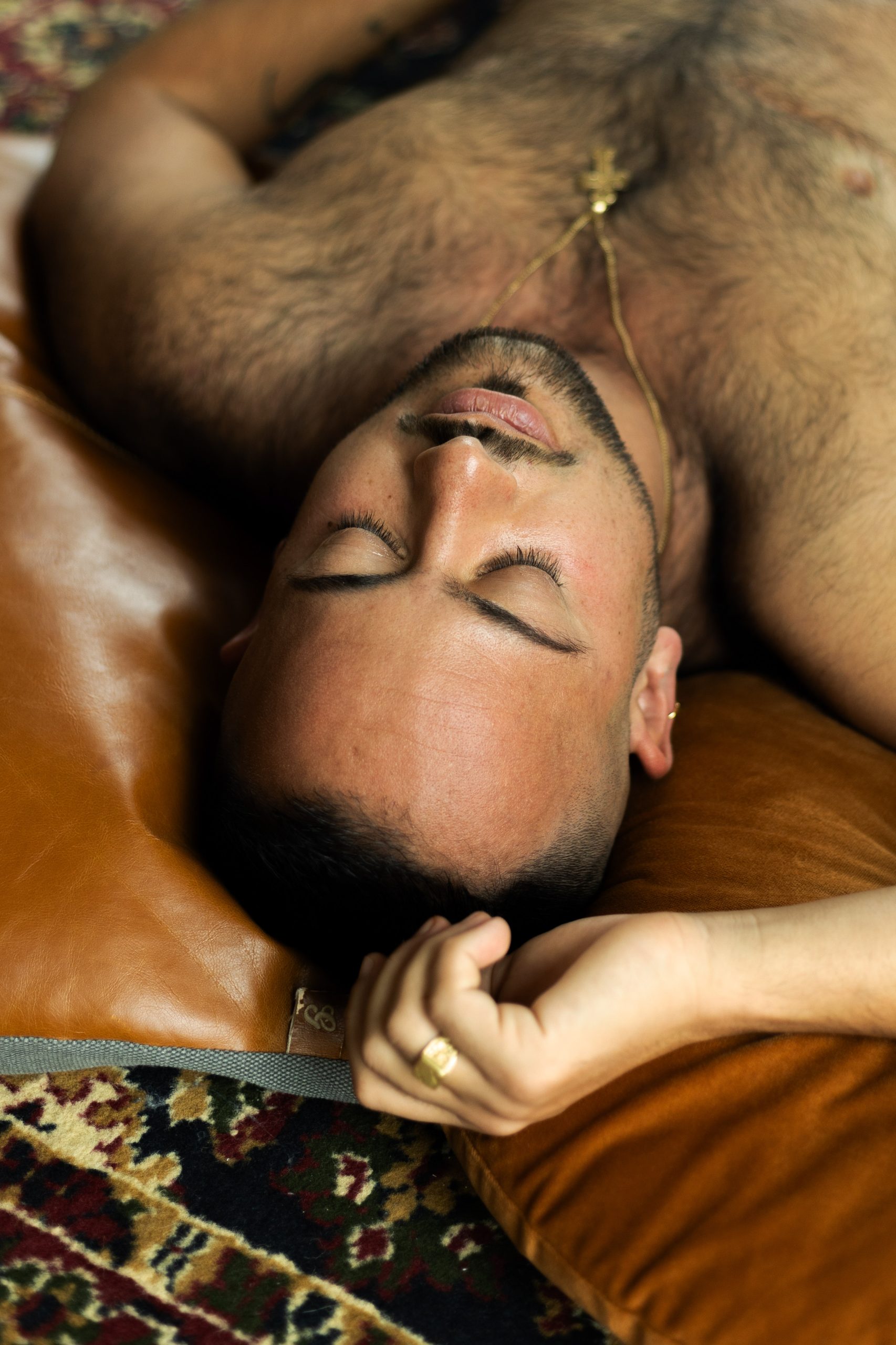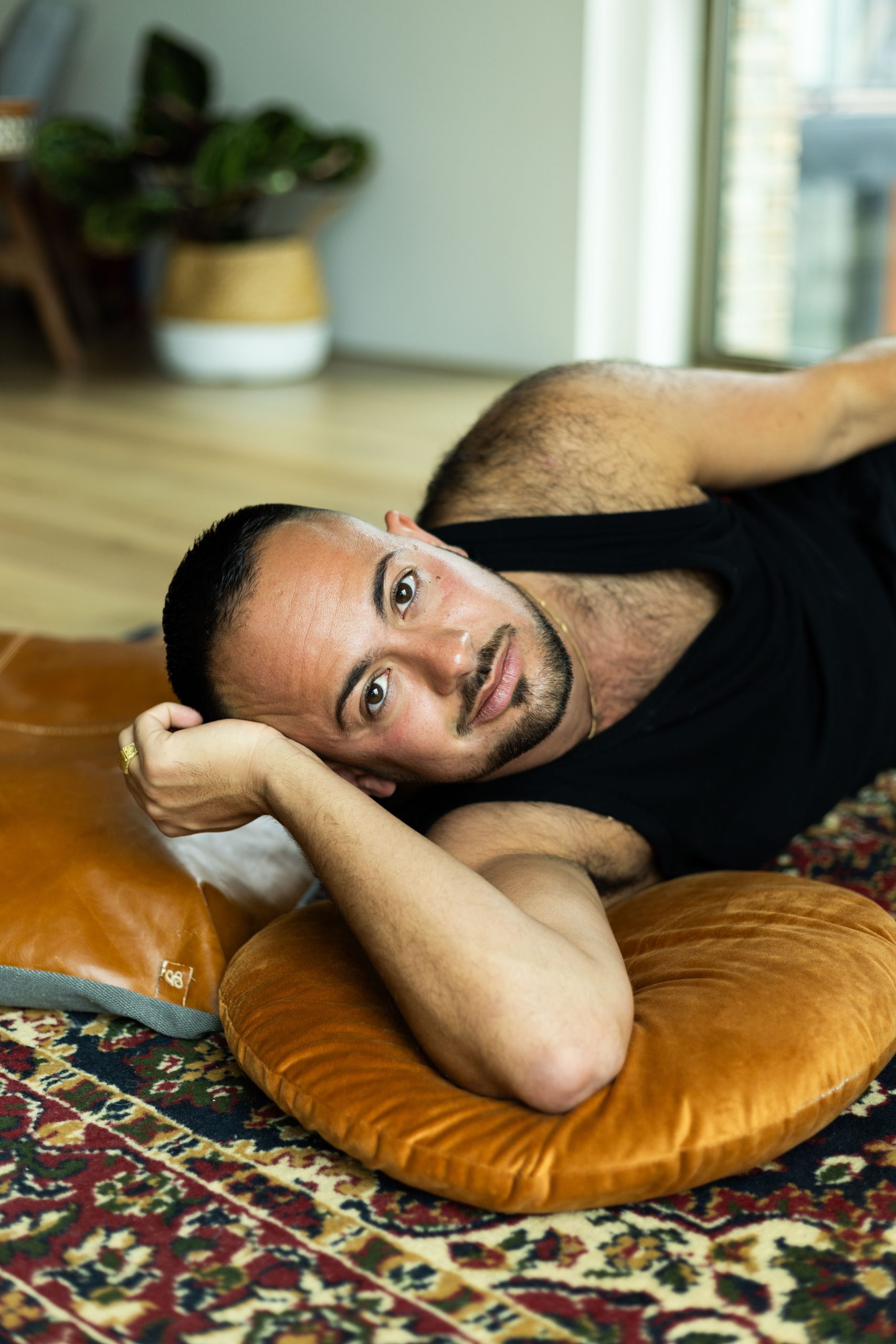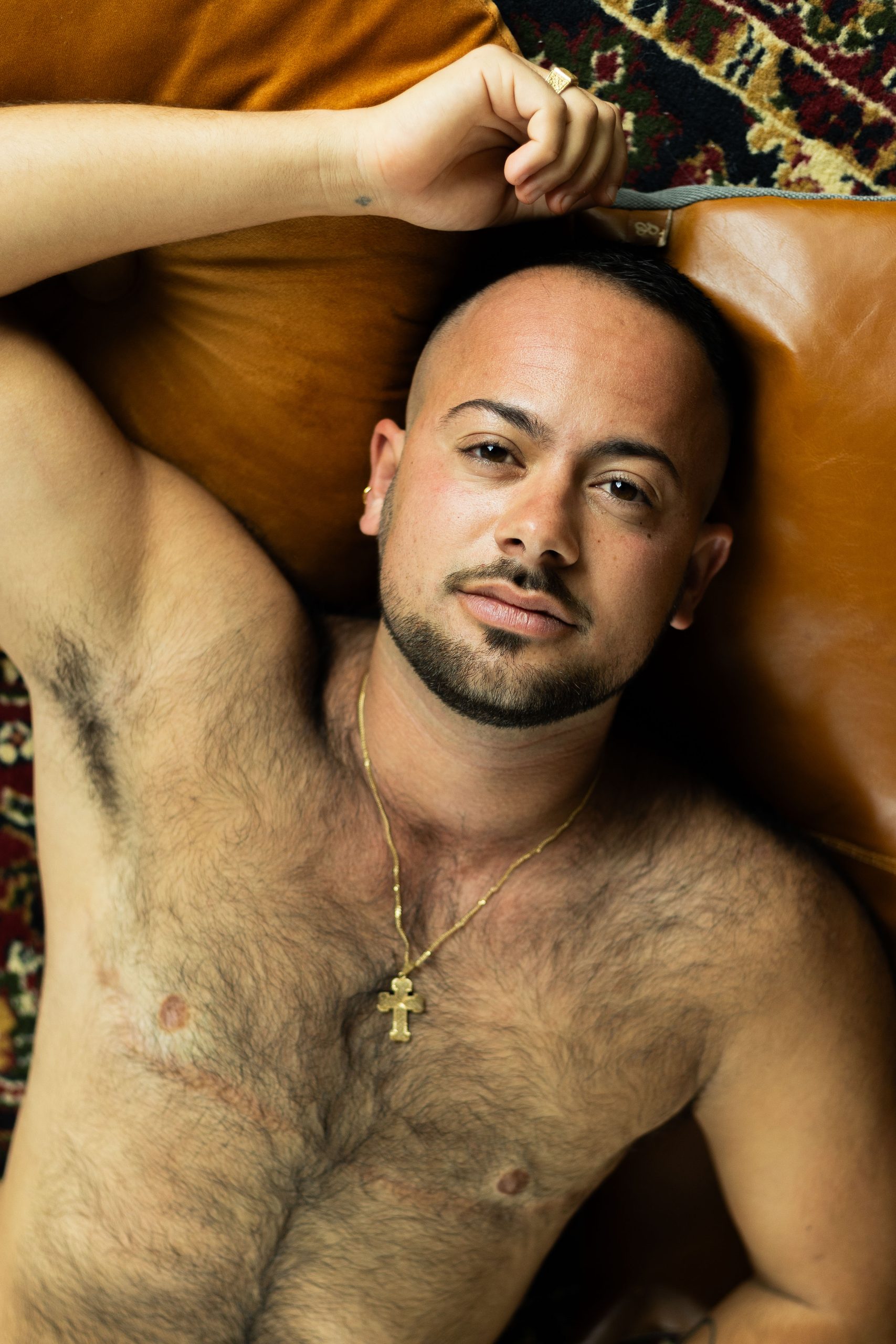‘Instead, from childhood onwards, I constantly drew portraits of an Arab-looking boy with a shiny earring and a sassy beard. It was me on those drawings, but no one recognised me.
As I progressed through my teens, the discrepancy between how I saw myself and what was expected of me grew. People were always commenting on how I moved, my tone, and my choice of language. I was told that I walked with my legs too far apart, and my parents spent endless hours teaching me to walk in heels and to act feminine. Soon enough, I was really good at all that female stuff, but I felt like a drag queen.
Fast-forward a few years. I had become a celebrated journalist and author, and the media loved me. I’ve been on the cover of many women’s glossies and been called the Penélope Cruz of the Low Countries. People’s praise for my looks always felt alienating, because my appearance did not do justice to who I was. When I finally came out as a man and stated that I refused to be publicly objectified any longer, the outrage was intense.
‘I miss the flirts, the whistles, the smiles and the compliments that were once so familiar. Why can’t this body be celebrated?’
During my transition, every change in my body that brought me closer to who I am and filled me with intense pride – such as muscle gain and hair growth – got dismissed by others. I felt desexualised, because people were always saying that it was such a pity I was doing this. That it was such a loss, because I used to be so beautiful. I consider myself as the handsome man that I am, but I miss the flirts, the whistles, the smiles and the compliments that were once so familiar. Why can’t this body be celebrated?
It’s not only transphobia. What is considered sexually attractive in the US and North America is based on white bodies. Asian and Arab men are never on the cover of magazines because we are not considered sexually desirable. No one gets turned on by Aladdin and his hairy carpet. The only discourse associated with that body is of criminality, terrorism and religious extremism. So when you’re an Arab trans man and you are lucky enough to be read as a man, you will be seen as a dangerous man. Never as an attractive man.
In general, white bodies are not so hairy and this is why bald or trimmed bodies are the norm here. Since the AIDS crisis, these societies have become incredibly desexualised, and as a result, excessive body hair gets connotated not only as alien, but also as sexually intrusive and dangerous. So again, Arab and North-African men are seen as unworthy of love, and their bodies are seen as a threat. Bodies that can easily be violated and killed.

Image: Elvin Boer
Celebrating my body hair and my beard is a political act, it shows trans men of colour can be hot and worthy of love. My luxuriant body hair is smooth and soft, I love stroking it. Like my beard, it makes me look more masculine. No one believes a trans man can be so hairy, so my facial hair helps me to fit in and move more freely, even in countries where you would not easily go as a trans person.
When I let my beard grow, I look more Arab; when I accentuate my moustache, people take me for a Latino. When I am in a foreign country, one of my favourite things to do is to go to a barbershop and pass as one of the locals. It’s a way of dissolving into the men’s world; you are suddenly one of them. A barbershop, especially outside Europe and North America, can be very intimate; a place full of tenderness and connection between men. I never experienced boyhood as a kid or as a teenager, so I’m trying to catch up on that now. When I immerse myself in male communities, I restore a piece of lost youth.
I am a man, and I like being in male spaces, but this doesn’t mean masculinity is unproblematic for me. Put two or three men in a room and they start to compete. Who’s bigger and better? Who has the highest salary, the biggest car and the most beautiful partner? As within every system that feels threatened, men are socialised with the idea that they constantly need to prove, show and confirm their masculinity. Often at the expense of others: two men can never be on the same level; one is the soldier, the other the general.
‘My luxuriant body hair is smooth and soft, I love stroking it. Like my beard, it makes me look more masculine.’
Masculine uncertainty is not only an issue for straight men, it also controls the lives of many gay and queer men. In order to compensate the shame, they too battle each other. The person who is able to pass as a ‘real man’ is at the top of the pecking order. Although the bear scene claims to be body positive and inclusive, it resembles the muscle scene in its incorporation of normative macho values. So at the top of the gay male hierarchy you will find white, wealthy, hypermasculine cis men.
I think most white men live in a permanent state of trauma. For centuries, they were part of a toxic zero sum or win-lose system, in which they had to be untouchable. Their bodies were like military armor, their goal was to reach the top by conquering other – so-called deviant and inferior – bodies. But in order to be an aggressor, you have to be able to dissociate from your emotions. Most men have never learned to share their vulnerabilities and to connect with each other on equal terms.
In these changing times, many men have the need to share their feelings, but don’t know how. That explains a lot of the loneliness, anger and hatred among many men. While the real healing lies in letting go of an imposed role and having the guts to become who you really are’.

Image: Elvin Boer
